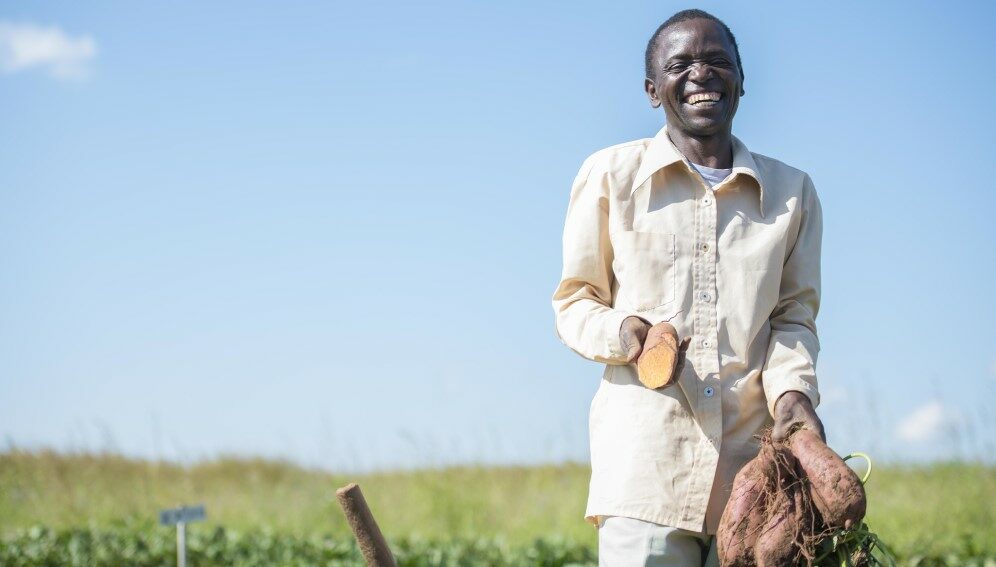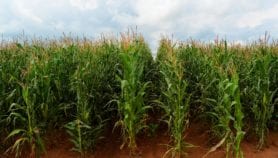20/07/22
Africa can shift to sweet potato amid wheat shortage

By: Nwokoye Mpi
Send to a friend
The details you provide on this page will not be used to send unsolicited email, and will not be sold to a 3rd party. See privacy policy.
[LAGOS) The rapidly rising cost of wheat globally is a cue for African countries to shift attention to sweet potato for their baking industry, says Jan Low, a principal scientist at the International Potato Centre.
The Russia-Ukraine war has triggered a wave of disruption of food supplies across Africa and the continent now faces a shortage of at least 30 million metric tonnes of food, especially wheat, maize and soybeans imported from both countries.
Time to shift focus
Low says turning to roots and tubers, such as sweet potato, which is widely produced within the continent is good policy because it supports local farmers by providing a market for their product; and if adopted widely, saves governments’ much-needed foreign exchange.
In 2020, Russia was the largest supplier of wheat to Africa, exporting over US$3.5 billion worth of the crop that year. Russia and Ukraine account for about 44 per cent of Africa’s wheat consumption.
But the war between both countries has driven up the crop’s prices by 60 per cent on the continent, according to the African Development Bank, forcing many bakers on the continent to either close shop or continue operating at losses.
“Orange-fleshed sweet potato needs to be introduced … so that consumers are aware of the health benefits and the potential for diversified use.”
Jan Low, International Potato Center
However, the introduction of the orange-fleshed sweet potatoes, particularly the purée, could see a drastic turnaround on the continent’s bakers’ fortunes.
Benefits of embracing sweet potato
“The promotion of orange-fleshed sweet potato purée as a wheat flour substitute certainly can learn from the cassava story in Nigeria,” says Low, referring to the Nigerian government’s unsuccessful attempt to introduce cassava flour as a key ingredient in bread-making.
“First, purée consists of steamed, mashed roots. It is not flour. Purée is more economically viable than flour because it takes four to five kilograms of fresh root to make a kg of sweet potato flour, and only 1.6 kgs of fresh root to make a kg of purée,” Low, a 2016 World Food Prize co-laureate, tells SciDev.Net as he makes a case for sweet potato puree as opposed to potato flour which is more expensive than wheat flour.
“The economic advantage of purée depends on how efficiently it is made and the kind of packaging used.
“We have found if the roots are carefully washed, the peel can be left on during the puréeing process and there is very little waste. Moreover, the peel adds more dietary fibre and iron and zinc into the final product.
“This product is referred to as ‘high fibre purée’ and it improves the overall nutritional content of the final product, plus cost savings for the baker.
“Second, recipes have been developed and tested with consumers that show a strong preference for bread, buns, cookies made with orange-fleshed sweet potato puree, compared to those with 100 per cent wheat flour.”
In Africa, convincing farmers and consumers to embrace new crop innovations is usually a slow and tedious process. For instance, there were beliefs among Mozambican farmers that the orange -fleshed sweet potato varieties require additional efforts to cultivate, and that they have lower drought tolerance than the white-fleshed sweet potato.
“Better orange -fleshed sweet potato varieties have been released or in the process of being released, but there has not been widespread, consistent support to get these varieties disseminated with the proper technical backstopping,” Low says.
“Orange-fleshed sweet potato needs to be introduced alongside a demand creation campaign so that consumers are aware of the health benefits and the potential for diversified use.”
Sweet potato is ‘climate-smart’ alternative
There is also the problem of adverse impacts of climate change, such as flooding and drought in the region. Food security declines by five to 20 per cent with each flood or drought while there is a roughly 1.4 per cent reduction in food calories per year from key food security crops, according to the World Bank.
Low says all types of sweet potato are well positioned to help adapt to climate change.
“First, sweet potato is more water efficient than most grain crops.
“Second, once established, there are many sweet potato varieties that are drought tolerant, and many are selected for early maturity — ready in three to four months — a great trait when season length is unpredictable.”
Low says their programme in Mozambique concentrates on breeding of orange-fleshed sweet potato drought-tolerant varieties that are now in use in many countries.
“Sweet potato, in fact, is known in East and Southern Africa as the crop that is there when the maize fails. It is one of the few food crops that can grow from sea level to 2,400 metres.
“One needs to select the right varieties for the desired agro-ecology. Fourth, no part of the sweet potato plant needs to go to waste. Both the roots and leaves can be consumed, and the vines are excellent animal feed.”
Low says that sweet potatoes have good levels of vitamins C, K, E and several B vitamins, and are good sources of magnesium and potassium.
“Orange-fleshed types are extremely rich in vitamin A — just one small root meets the daily needs of a young child,” Low tells SciDev.Net.
This piece was produced by SciDev.Net’s Sub-Saharan Africa English desk.















